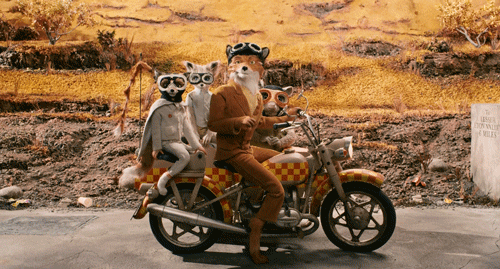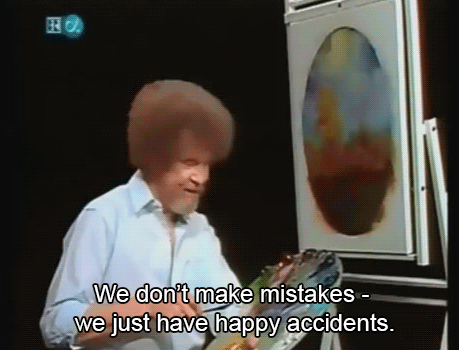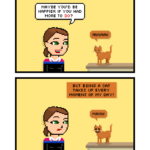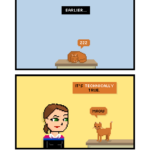flamethrowing-hurdy-gurdy:
elodieunderglass:
flamethrowing-hurdy-gurdy:
I have had this on my mind for days, someone please help:
Why are dogs dogs?
I mean, how do we see a pug and then a husky and understand that both are dogs? I’m pretty sure I’ve never seen a picture of a breed of dog I hadn’t seen before and wondered what animal it was.
Do you want the Big Answer or the Small Answers cos I have a feeling this is about to get Intense
Oooh okay are YOU gonna answer this, hang on I need to get some snacks and make sure the phone is off.
The short answer is “because they’re statistically unlikely to be anything else.”
The long question is “given the extreme diversity of morphology in dogs, with many subsets of ‘dogs’ bearing no visual resemblance to each other, how am I able to intuit that they belong to the ‘dog’ set just by looking?”
The reason that this is a Good Big Question is because we are broadly used to categorising Things as related based on resemblances. Then everyone realized about genes and evolution and so on, and so now we have Fun Facts like “elephants are ACTUALLY closely related to rock hyraxes!! Even though they look nothing alike!!”
These Fun Facts are appealing because they’re not intuitive.
So why is dog-sorting intuitive?
Well, because if you eliminate all the other possibilities, most dogs are dogs.
To process Things – whether animals, words, situations or experiences – our brains categorise the most important things about them, and then compare these to our memory banks. If we’ve experienced the same thing before – whether first-hand or through a story – then we know what’s happening, and we proceed accordingly.
If the New Thing is completely New, then the brain pings up a bunch of question marks, shunts into a different track, counts up all the Similar Traits, and assigns it a provisional category based on its similarity to other Things. We then experience the Thing, exploring it further, and gaining new knowledge. Our brain then categorises the New Thing based on the knowledge and traits. That is how humans experience the universe. We do our best, and we generally do it well.
This is the basis of stereotyping. It underlies some of our worst behaviours (racism), some of our most challenging problems (trauma), helps us survive (stories) and sharing the ability with things that don’t have it leads to some of our most whimsical creations (artificial intelligence.)
In fact, one reason that humans are so wonderfully successful is that we can effectively gain knowledge from experiences without having experienced them personally! You don’t have to eat all the berries to find the poisonous ones. You can just remember stories and descriptions of berries, and compare those to the ones you’ve just discovered. You can benefit from memories that aren’t your own!
On the other hand, if you had a terribly traumatic experience involving, say, an eagle, then your brain will try to protect you in every way possible from a similar experience. If you collect too many traumatic experiences with eagles, then your brain will not enjoy eagle-shaped New Things. In fact, if New Things match up to too many eagle-like categories, such as
* pointy
* Specific!! Squawking noise!!
* The hot Glare of the Yellow Eye
* Patriotism?!?
* CLAWS VERY BAD VERY BAD
Then the brain may shunt the train of thought back into trauma, and the person will actually experience the New Thing as trauma. Even if the New Thing was something apparently unrelated, like being generally pointy, or having a hot glare. (This is an overly simplistic explanation of how triggers work, but it’s the one most accessible to people.)
So the answer rests in how we categorise dogs, and what “dog” means to humans. Human brains associate dogs with universal categories, such as
* four legs
* Meat Eater
* Soft friend
* Doggo-ness????
* Walkies
* An Snout,
* BORK BORK
Anything we have previously experienced and learned as A Dog gets added to the memory bank. Sometimes it brings new categories along with it. So a lifetime’s experience results in excellent dog-intuition.
And anything we experience with, say, a 90% match is officially a Dog.
Brains are super-good at eliminating things, too. So while the concept of physical doggo-ness is pretty nebulous, and has to include greyhounds and Pekingese and mastiffs, we know that even if an animal LOOKS like a bear, if the other categories don’t match up in context (bears are not usually soft friends, they don’t Bork Bork, they don’t have long tails to wag) then it is statistically more likely to be a Doggo. If it occupies a dog-shaped space then it is usually a dog.
So if you see someone dragging a fluffy whatnot along on a string, you will go,
* Mop?? (Unlikely – seems to be self-propelled.)
* Alien? (Unlikely – no real alien ever experienced.)
* Threat? (Vastly unlikely in context.)
* Rabbit? (No. Rabbits hop, and this appears to scurry.) (Brains are very keen on categorising movement patterns. This is why lurching zombies and bad CGI are so uncomfortable to experience, brains just go “INCORRECT!! That is WRONG!” Without consciously knowing why. Anyway, very few animals move like domestic dogs!)
* Very fluffy cat? (Maybe – but not quite. Shares many characteristics, though!)
* Eldritch horror? (No, it is obviously a soft friend of unknown type)
* Robotic toy? (Unlikely – too complex and convincing.)
* alert: amusing animal detected!!! This is a good animal!! This is pleasing!! It may be appropriate to laugh at this animal, because we have just realized that it is probably a …
* DOG!!!! Soft friend, alive, walks on leash. It had a low doggo-ness quotient! and a confusing Snout, but it is NOT those other Known Things, and it occupies a dog-shaped space!
* Hahahaha!!! It is extra funny and appealing, because it made us guess!!!! We love playing that game.
* Best doggo.
* PING! NEW CATEGORIES ADDED TO “Doggo” set: mopness, floof, confusing Snout.
And that’s why most dogs are dogs. You’re so good at identifying dog-shaped spaces that they can’t be anything else!














